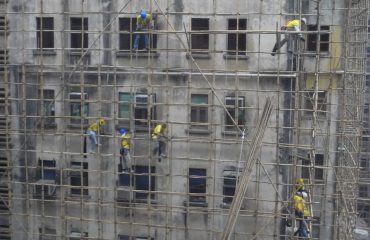Post-production is the crucial final stage where your raw footage transforms into a polished, professional product. However, even the most creative editing can be undermined by poor quality monitoring. This comprehensive guide will equip you with the knowledge and strategies to ensure your audio and video meet the highest standards, leaving you confident in delivering a flawless final product.
Setting Up Your Monitoring Environment: The Foundation of Quality
Your monitoring environment is the cornerstone of effective quality control. A poorly calibrated setup will lead to inaccurate assessments and potential errors that only become apparent after distribution. This includes several key aspects:
- Room Acoustics: Treat your room to minimize reflections and unwanted resonances. Acoustic panels and bass traps can significantly improve audio accuracy. Avoid overly reflective surfaces like bare walls and hard floors.
- Monitor Selection: Invest in high-quality studio monitors calibrated for flat frequency response. Avoid consumer-grade speakers, as their inherent coloration will skew your perception of the audio mix.
- Calibration Tools: Utilize calibration software and tools to ensure your monitors are accurately reproducing sound. Regular calibration is essential to maintain accuracy over time.
- Video Display: For video, use a calibrated monitor with accurate color representation. Different displays can render colors differently, so consistency is crucial.
Implementing a Robust QC Checklist: Catching Errors Before Release
A well-defined QC checklist is essential for consistent quality monitoring. This checklist should cover all aspects of your production, from audio and video to metadata and subtitles. Consider including these elements:
- Audio Levels: Check for consistent audio levels throughout the project, avoiding clipping or excessive dynamic range. Pay attention to dialogue clarity, background noise, and music integration.
- Video Quality: Inspect for artifacts, compression issues, color inconsistencies, and dropped frames. Ensure the resolution and aspect ratio are correct.
- Synchronization: Verify that the audio and video are perfectly synchronized throughout the entire production. Even minor discrepancies can be distracting.
- Metadata Accuracy: Confirm that all metadata, including titles, descriptions, and keywords, are accurate and complete.
- Subtitle Accuracy: If subtitles are used, carefully review their accuracy and timing. Ensure they are synchronized with the audio and video.
Utilizing Automated Quality Control Tools: Streamlining the Workflow
While manual checks are essential, leveraging automated QC tools can significantly enhance efficiency and catch errors that might be missed during manual review. These tools automate tasks such as:
- Audio Level Analysis: Identify potential clipping or low-level audio issues.
- Video Frame Analysis: Detect dropped frames, inconsistencies in resolution or aspect ratio, and other visual artifacts.
- Metadata Verification: Ensure that all metadata fields are correctly populated.
- Subtitle Checking: Verify the accuracy and synchronization of subtitles.
- Color Grading Consistency: Detect variations in color grading across different scenes or shots.
Many professional video editing software packages integrate QC tools, or you can find dedicated third-party applications.
The Importance of Collaboration and Feedback: A Multi-Eyed Approach
Quality monitoring isn’t a solo endeavor. Involving multiple team members in the QC process brings diverse perspectives and improves the chances of catching errors. This collaborative approach can include:
- Peer Reviews: Have colleagues review the project to identify potential issues you might have missed.
- Client Feedback: Incorporate feedback from the client or stakeholders to ensure the final product aligns with their expectations.
- Test Screenings: Conduct test screenings with a representative audience to gather feedback on overall quality and viewer experience.
Remember, fresh eyes often spot errors that have become invisible to those who worked closely on the project.
Documenting and Iterating: Continuous Improvement in Post-Production
A crucial element of effective quality monitoring is documentation. Maintain detailed records of all identified issues, the corrective actions taken, and the results. This documentation serves multiple purposes:
- Tracking Progress: Monitor the effectiveness of your QC process and identify areas for improvement.
- Identifying Trends: Detect recurring errors and implement preventative measures to avoid future issues.
- Improving Workflow: Analyze the data to optimize your post-production workflow and reduce the frequency of errors.
- Training and Development: Use the documentation to train new team members and improve their QC skills.
By continuously improving your QC process, you can ensure consistent delivery of high-quality productions.
By diligently implementing these strategies, you’ll transform your post-production workflow, resulting in a significantly higher quality final product. Remember, quality monitoring isn’t just about catching errors; it’s about ensuring your vision is realized to its fullest potential.
SEO Tags:
- Post-production quality control
- Audio video QC
- Media quality monitoring
- Post-production workflow
- Video editing QC




